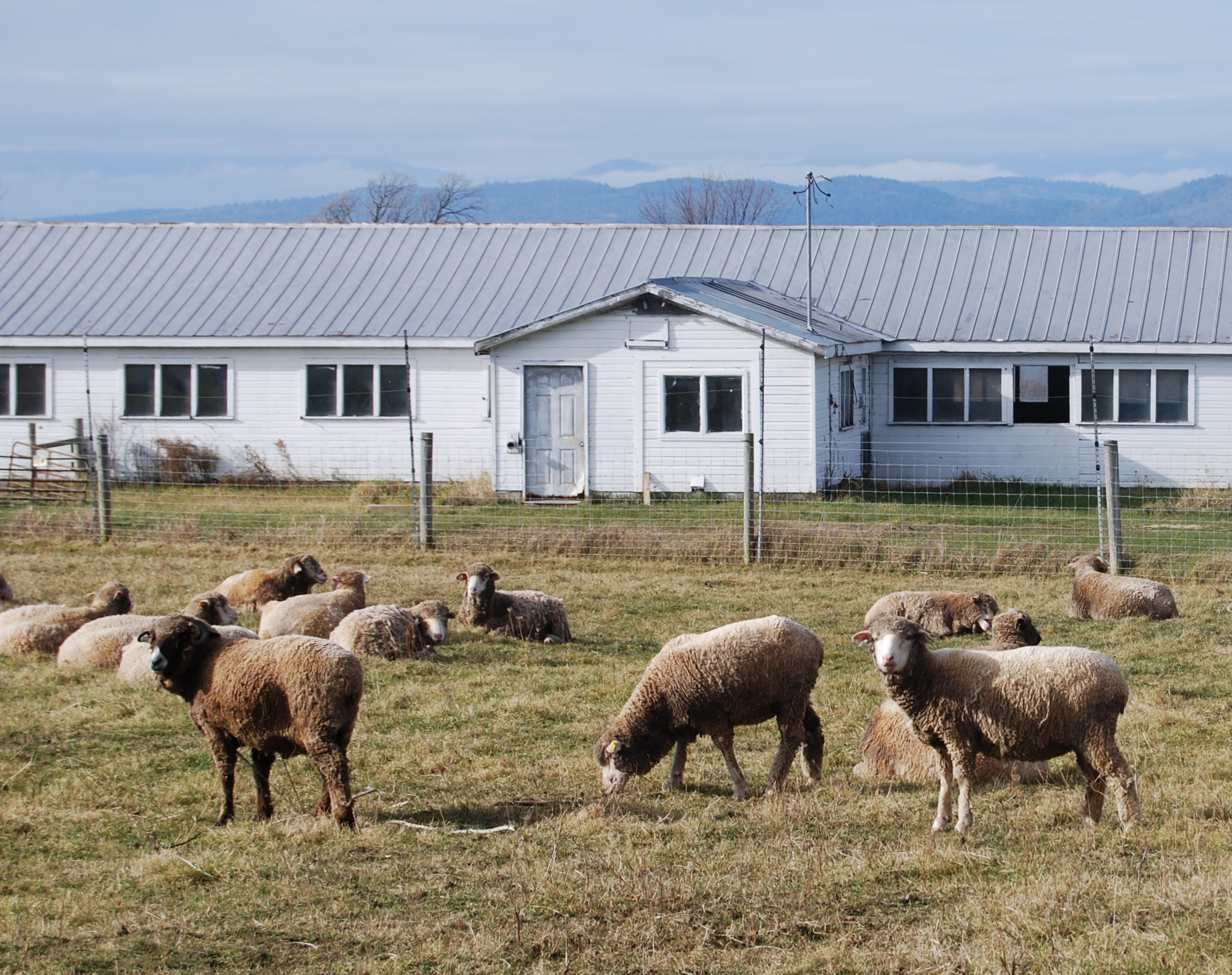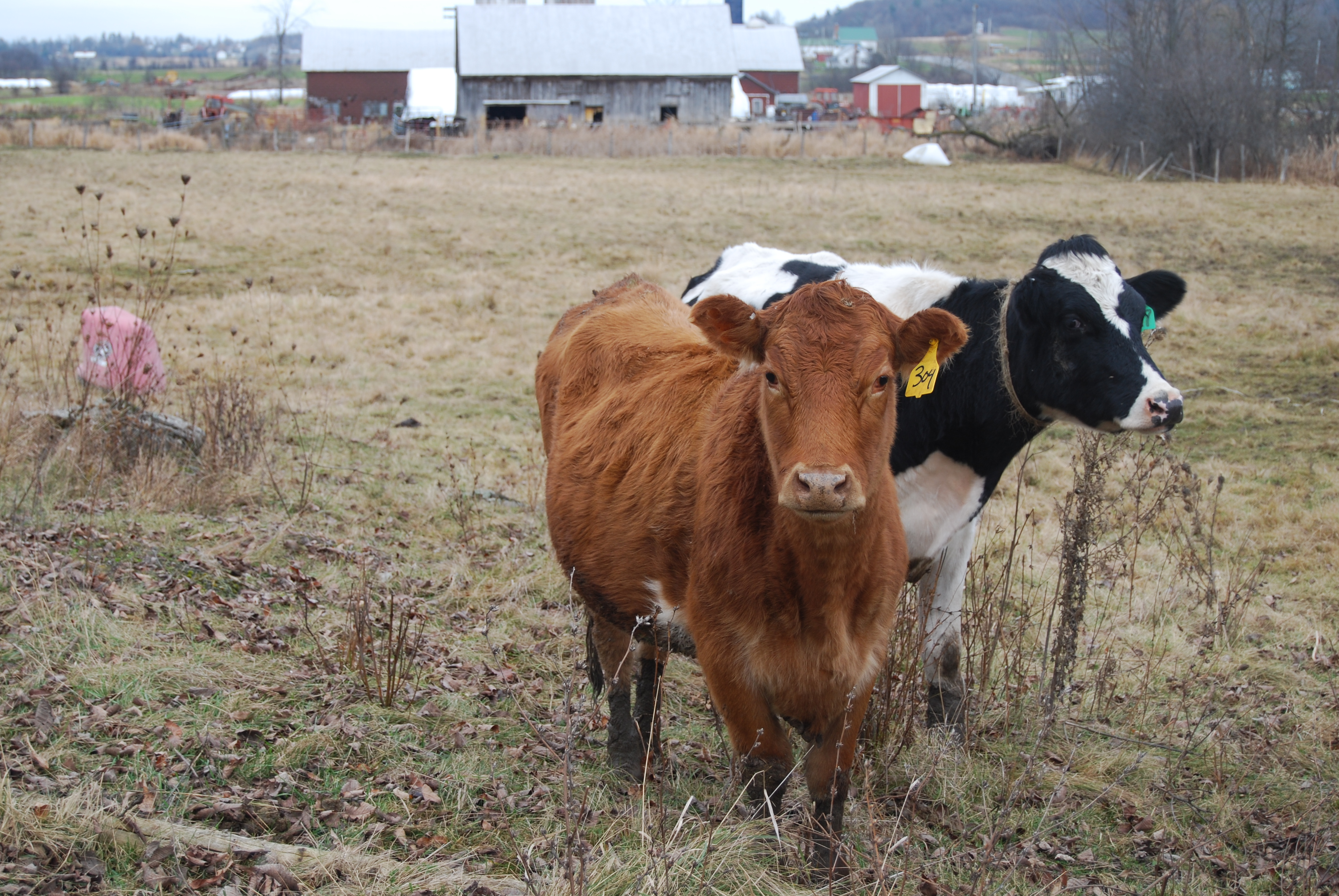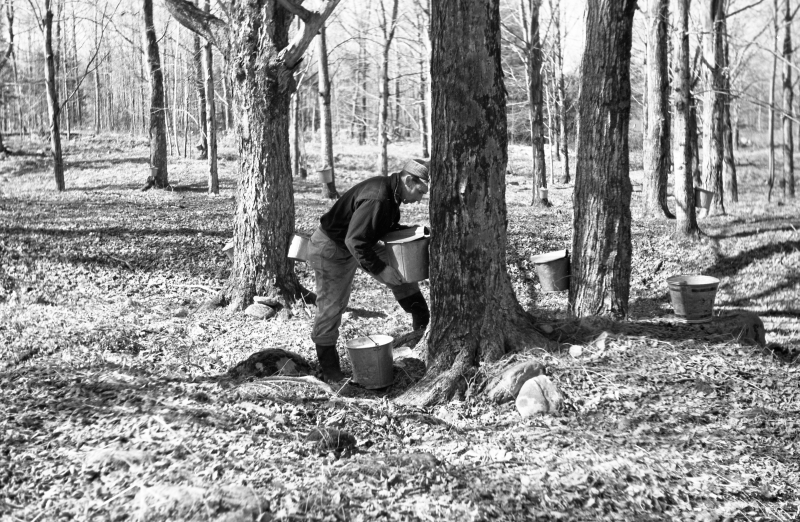Home
Maps
Photos Agricultural Census
Resources Get Involved |
|
An Agricultural History of Manchester, Vermont
Research Compiled by Meghan Bezio
October 2009
In its early
years, Manchester’s primary resources included wool, marble and timber.[1] Maple sugar became a common product by the
mid-nineteenth century and steadily gained importance through the second half
of the nineteenth century. By the late nineteenth century dairy farming took
its place in Manchester’s agricultural history as well. Excepting butter, cheese, stock and maple
sugar, most of the products produced on Manchester’s farms were consumed at
home, according to the Vermont Historical
Gazetteer.[2] As agricultural trends changed and materials
became less abundant, Manchester’s commercial activities focused less on
natural resources and agriculture and more on tourism. Around 1850, the town was established as a
first-class vacation destination, offering diverse activities throughout the
four seasons. Manchester’s beauty and
charm still help to promote tourism in the area and today the town thrives as
tourists crowd into its hotels, shops and restaurants. Wool
The woolen industry
in Vermont became a lucrative business for farmers around 1811, when a flock of
Merino sheep was introduced to the hills of the Green Mountains. Sheep were
raised for substantial profits in Vermont early in the nineteenth century and
the occupation of raising sheep continued to be a secure way of turning profits
until after the Civil War, when the woolen industry developed in the west and
other countries.[3] By
looking at the agricultural censuses between 1850 and 1880, it is possible to
determine that Manchester’s sheep raising trends closely followed the trends in
sheep farming in the rest of Vermont during the nineteenth century. Many of the
histories of Manchester state that the hilly terrain was very much suited to
raising sheep. In 1824, there were three fulling mills in Manchester, which
suggests a sizeable sheep population[4].
By 1850, 75 out of 124 farms, or 60%, were producing wool (Fig. 2). 23 of these
farms had one hundred or more sheep (see table 1). This accounted for 19% of
all the farms in Manchester at the time of the census. By 1860, a decline in the production of wool
and the number of sheep being raised on farms can be seen. Only 52 out of 120
farms, or 42%, in 1860 were producing wool. The number of farms with one
hundred sheep or more dropped dramatically from 23 to 8, which accounted for only
7% of the farms in Manchester. While the number of farms with a large number of
sheep remained about the same in 1870, the number of farms producing wool
continued to be low in number.[5]
Only 19% of the farms in Manchester were
yielding wool in 1870. A curious fact arises from the 1880 agricultural census.
While the number of farms with one hundred or more sheep dropped to 3 out of
126, or 2%, the percentage of farms producing wool rose slightly from the
previous year. This means that wool production was starting to be done on a
much smaller scale by the end of the nineteenth century. In 1946, a little over
a half a century later, sheep were not even mentioned in the agricultural
census. By this time, cows had taken over as the main stock on farms in
Manchester. Dairying
Not surprisingly,
the dairy industry in Manchester also follows the larger trend of dairying in
Vermont (Fig. 3). While dairying started off slowly in the second half of the
nineteenth century, by the 1870s and 1880s the production of butter, cheese,
and milk began to increase as access to markets was improved and refrigeration allowed
products to be shipped farther away from their place of manufacture. The number
of farms with ten or more cows rose from 9 out of 124, or 7%, in 1850 to 23
farms out of 126, or 18% in 1880. By 1945, the average number of cows per farm
in Manchester was fourteen, with 69% of farms reporting cows. When dairying
first started taking off in Manchester, and as well as in the rest of the
state, cheese was its main byproduct since it is less perishable than butter or
milk. With technological advances including better refrigeration in the late
nineteenth century, one can see a decrease in cheese production and an increase
in butter production. While 4% and 2% of farms in Manchester were making cheese
in 1850 and 1860, respectively, none were making cheese in 1870 and 1880. Butter
production, on the other hand, increased steadily between 1850 and 1880. 2% of
farms were making butter in 1850, 3% in 1860, and 4% in 1870. By 1880, 18 out
of 126 farms were making butter, increasing butter production by 10%. It is
also interesting to note that commercial milk production is not recorded in
Manchester’s agricultural census data for the years 1850, 1860, and 1870.
In1880, however, special attention is paid to the amount of milk sold or sent
to butter and cheese factories. 28 out of 126 farms in Manchester, or 22%, were
selling milk in 1880. A butter and cheese factory was even opened in Manchester
in 1876.[6]
Maple Sugar Maple sugar was
another product harvested in Manchester, and elsewhere in Vermont, on a large
scale. Extracting maple sugar from trees was a practice learned from the first
settlers of the land, Native Americans.[7]
While the 1824 Gazetteer of the State of
Vermont makes no record of the maple sugar industry in Manchester,
it can be assumed that the highly desirable good was being produced in
Manchester early on in its history because other towns in Vermont were
producing large quantities of sugar as early as the 1790s. It is clear that the
yields of maple sugar steadily increased in Manchester as the nineteenth
century progressed. This is most likely due to better maple sugaring techniques
and processing, such as special outbuildings constructed specifically for maple
sugaring.[8]
Manchester farms producing maple sugar increased from 13% in 1850 to 22% in 1870,
but declined slightly by 1880. That year
there were 25 out of 126 farms producing maple sugar, which accounted for 20%
of the farms in Manchester at the time. It is unclear whether this decrease in
maple sugar production continued into the twentieth century, as the 1945
agricultural census makes no mention of maple sugar.
   Table 1:
|
|
100+ sheep
|
10+ Milk Cows
|
1000+ lbs. cheese
|
1000+ lbs. butter
|
1000+ lbs. maple sugar
|
Orchard value 100+
|
Com. Milk production
|
Wine production
|
|
1850
124 farms
|
23
19%
|
9
7%
|
5
4%
|
2
2%
|
16
13%
|
0
|
N/A
|
0
|
|
1860
120 farms
|
8
7%
|
6
5%
|
2
2%
|
3
3%
|
17
14%
|
0
|
N/A
|
11
9%
|
|
1870
90 farms
|
9
10%
|
1
1%
|
0
|
4
4%
|
20
22%
|
1
1%
|
N/A
|
0
|
|
1880
126 farms
|
3
2%
|
23
18%
|
0
|
18
14%
|
25
20%
|
8
6%
|
28
22%
|
0
|
Common Agricultural Practices The agricultural
products that most farms had in common became evident after analyzing the agricultural
censuses between the years of 1850 and 1880. Hay, Irish potatoes, Indian corn, oats
and buckwheat were harvested on almost every farm in Manchester during the
nineteenth century. Hay was yielded on every farm in town in 1850; all but one
farm in 1860 and 1870; and on all but two farms in 1880. This is not surprising
given that hay was needed to feed livestock throughout the year. Almost 100% of
the farms in Manchester yielded crops of Irish potatoes (as opposed to sweet
potatoes) as well. It is likely that the potatoes were only for consumption by
the farmer’s family or sold locally, as the yields on average were 100 bushels
or less. Indian corn and oats are two more crops that were widely produced on
farms in Manchester. Between 82% and 97% of farms yielded crops of both oats
and Indian corn between 1850 and 1880. Buckwheat, while only produced on a
little over half of the farms in town in the mid-nineteenth century, was
another crop harvested on a large scale. Surprising Finds Some of the agricultural
trends identified in the 1850 through 1880 censuses were surprising. It is
clearly seen that the number of orchards and fruit production increased in
Manchester as the nineteenth century progressed. In 1850, 26 out of 124 farms,
or 21%, in Manchester were yielding fruit. Within ten years, that number jumped
dramatically to 68%, meaning that 82 out of 120 farms were producing fruit that
year. The percentage of farms decreased
in 1870 to 42%, but again rose to 65% in 1880. The fluctuating numbers may
suggest consistently bad weather or a blight affecting the yields during the
1860s. By the mid-twentieth century, unfortunately, the number of farms with
orchards dropped radically to only 3 out of 107 farms, or just below 3%. The
1860s were turbulent years for the United States, but the Civil War helped
increase revenues in some industries. It is curious to note that in the 1850,
1870, and 1880 censuses there are no records of wine production on any farm in
Manchester. However, during the 1860s, 9% of the farms in the town were making
wine. Another crop that was produced on
a much larger scale in the 1860s than any other year was the bean.[9]
50 out of 120 farms, or 42%, were
yielding bean crops on the 1860 census while between 0% and 8% of farms
produced the crop in 1850, 1870, and 1880. It is also worth noting that beeswax
and honey were produced on a small scale in 1850 and 1860, but the industry was
virtually nonexistent by 1870 and 1880.[10]
Other Products While in essence
not agricultural products, it is worth mentioning that marble and timber were
two of Manchester’s primary resources during the nineteenth century. Marble
quarries popped up in Bennington County along the marble corridor in Western
Vermont. In the 1830s Manchester was excavating marble for use in town and for
export to other towns. The marble sidewalks and building foundations in
Manchester have impressed many a visitor to the town throughout its history.
The lumber industry was also a lucrative business in Manchester. By 1775 there
was a saw mill in Manchester and 50 years later that number had increased from
one to four.[11] The
forests, abundant from the time of settlement until the twentieth century,
provided Manchester with a profitable natural resource at a time when the town,
state, and country were being developed at a respectable pace. Surely the
lumber industry brought wealth to the town which is so ideally situated in the
beautiful valley beneath Equinox Mountain.
Conclusion Bigelow and Otis,
in Manchester, Vermont: A Pleasant Land
Among the Mountains, comment that industries in Manchester “have been
dependent upon natural resources such as timber, stone, the products of
agriculture, and that particular bounty of nature exemplified in climate and
scenic charm.”[12]
It is true that many of Manchester’s prime economic endeavors were dependent
upon a limited supply of natural resources, but the town has found ways to
compensate for the loss of these industries in the twentieth century. During the nineteenth century it is evident
that the people of Manchester participated in a wide range of agricultural
activities ranging from growing wheat to sheep farming to, most recently,
producing milk, butter and cheese. While there are some curious trends in crop
production between the years 1850 and 1880, agricultural development in the
town of Manchester mirrored those trends found throughout most of Vermont. The
wool industry made many farmers successful in the early nineteenth century, but
dairying gradually became the most popular way to make a living on the farm in
the latter half of the century. Maple sugar was also made and sold in large
quantities. The marble quarries and lumber business also played a large role in
shaping the economy of Manchester. Today, however, the business of tourism
takes the place of the wool, dairy, maple sugar, marble and timber industries
(Fig. 4). Visitors will still see some agricultural activity in the south part
of the town, but most come to experience seasonal activities such as skiing,
leaf-peeping and shopping at the outlets located in the town center. Notes [1]
According
to the Vermont Historical Gazetteer,
wheat was also extensively produced at some point in Manchester’s history, but
by the 1860s its production was almost completely abandoned. It is unclear when
this widespread cultivation of wheat took place on farms in Manchester, but one
can guess that it around the early to mid-eighteenth century. The 1850 census
recorded 22 out of 124 farms, or 18%, harvesting wheat. By 1860, however, only
7 out of 120 farms, or 6%, were harvesting the grain.
[2]
Abby Maria Hemenway, The Vermont Historical
Gazeteer: A Magazine Embracing a History of Each Town (Burlington: Miss A.
M. Hemenway, 1868), 203.
[3]
Agricultural Resources of Vermont. (National Register of Historic Places Form, United
States Department of the Interior, 1991), Section E, 19-22.
[4]
Zadock Thompson,
A Gazetteer of the State of Vermont; Containing A Brief General View of the
State, a Historical and Topographical Description of All the Counties, Towns,
Rivers, & etc. (Montpelier: E.P. Walton, 1824), 307.
[5] In 1870, the number of farms with one hundred
or more sheep was 9.
[6]
Bigelow and Otis 1961, 152.
[7]
Agricultural Resources of Vermont 1991,
Section E, 12.
[8]
Agricultural Resources of Vermont 1991,
Section E, 13.
[9]
On the census this category includes peas and beans, but for my purposes, I
have just grouped them together as “beans”.
[10]
With no farms producing beeswax or honey in 1870 and only 1 producing the
products in 1880.
[11]
Loveland Munson, The Early History of
Manchester: An Address (Manchester: Journal Print, 1876), 21; Thompson 1824,
307.
[12]
Bigelow and Otis 1961, 145. |

